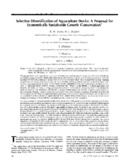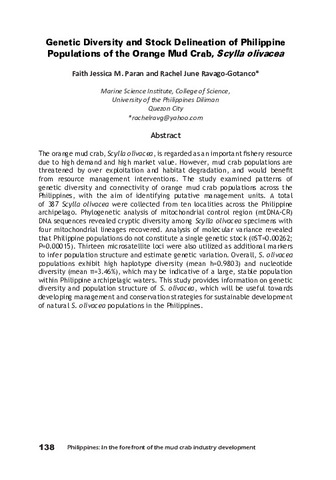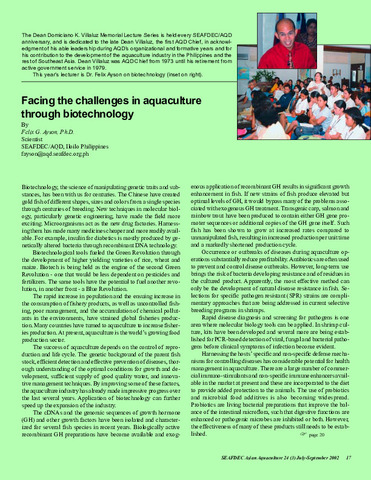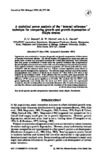Selective diversification of aquaculture stocks: A proposal for economically sustainable genetic conservation

View/
Request this document
Date
1991Page views
221Metadata
Show full item recordCited times in Scopus
Share
Abstract
The genetic diversity of aquaculture stocks can be maintained, and their genetic impact on wild stocks minimized, by breeding programmes that deliberately generate genetic diversity. Current animal breeding practices are likely to reduce the diversity of domestic stocks if they are extended to aquaculture. It is proposed that national breeding programmes for aquaculture should, instead, try to develop numerous breeds specially adapted to local environments and aquaculture systems. An economic model is presented of decision-making by individual farmers who, in choosing which breed to produce, determine the "fitness" of the breeds in a meta-population that includes all breeds. As long as strong genotype-environment interaction for production traits is maintained by artificial selection, the economic self-interest of farmers should ensure the stability of genetic polymorphisms among breeds. Genetic variation would be conserved (in the among-breed component of genetic diversity) but not the primordial distribution of gene and genotype frequencies. Economic benefits to farmers, plus a high return on investment at the national or supra-national level, makes breed diversification an attractive conservation strategy even though it is admittedly a compromise from a purely genetic viewpoint.
Suggested Citation
Doyle, R. W., Shackel, N. L., Basiao, Z., Uraiwan, S., Matricia, T., & Talbot, A. J. (1991). Selective diversification of aquaculture stocks: A proposal for economically sustainable genetic conservation. Canadian Journal of Fisheries and Aquatic Sciences , 48(S1), 148-154. https://doi.org/10.1139/f91-313
DOI
10.1139/f91-313Subject
Collections
- AQD Journal Articles [1215]
Related items
Showing items related by title, author, creator and subject.
-
Genetic diversity and stock delineation of Philippine populations of the orange mud crab, Scylla olivacea
Paran, Faith Jessica M.; Ravago-Gotanco, Rachel June (Aquaculture Department, Southeast Asian Fisheries Development Center, 2017)The orange mud crab, Scylla olivacea, is regarded as an important fishery resource due to high demand and high market value. However, mud crab populations are threatened by over exploitation and habitat degradation, and ... -
Facing the challenges in aquaculture through biotechnology
Ayson, Felix G. (Aquaculture Department, Southeast Asian Fisheries Development Center, 2002) -
A statistical power analysis of the 'internal reference' technique for comparing growth and growth depensation of tilapia strains
Basiao, Zubaida U.; Doyle, R. W.; Arago, A. L. (Wiley-Blackwell, 1996)Experiments were conducted to compare the growth and growth compensation of three strains of juvenile Oreochromis niloticus. Ten full sib families (10 replicates) per strain were split and grown under crowded and uncrowded ...




